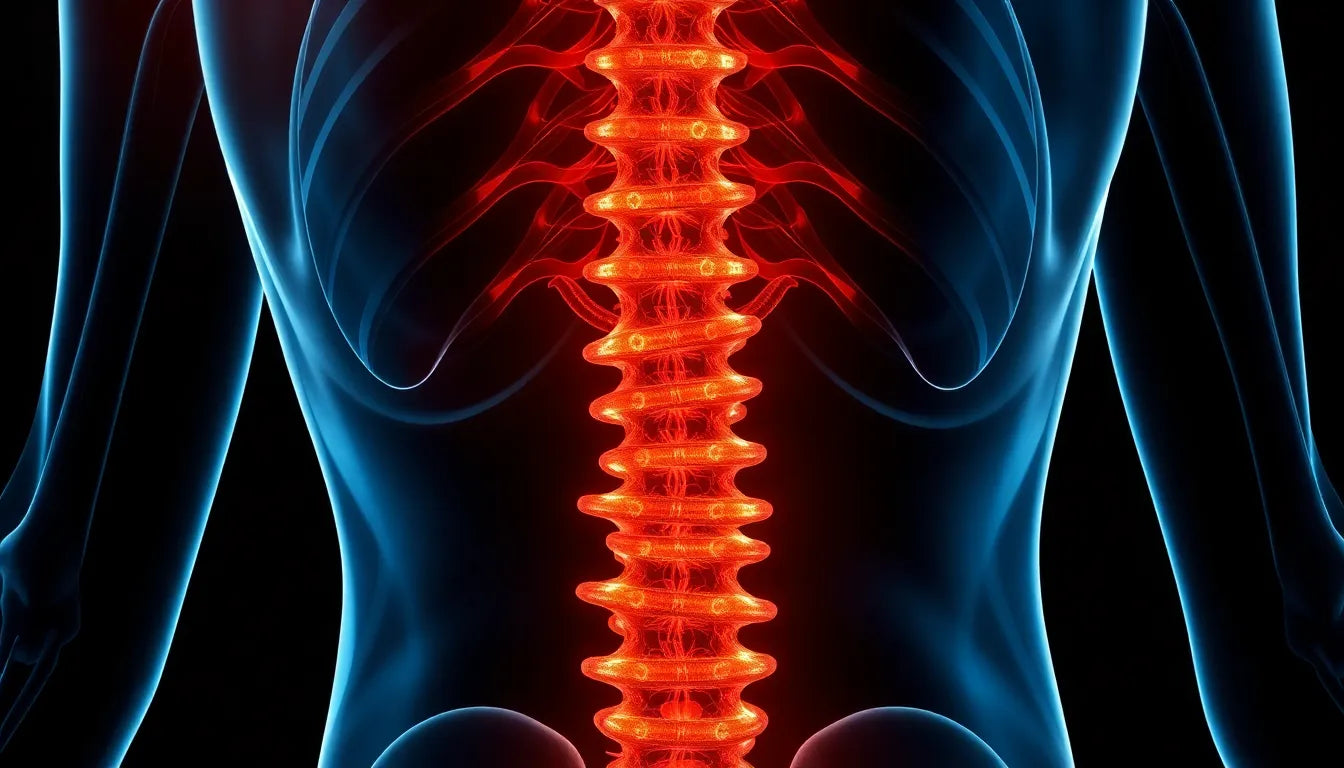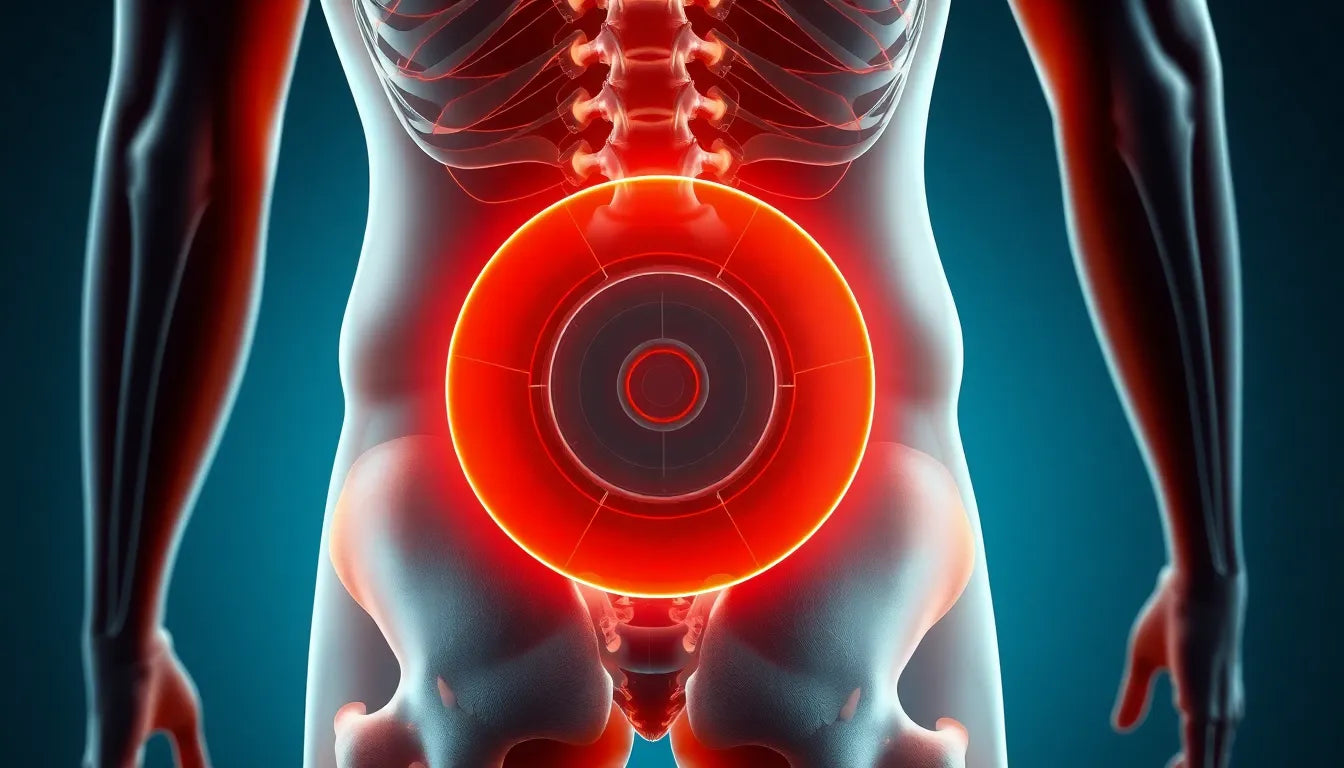Understanding how to effectively manage herniated disc pain is crucial for those seeking relief from this often debilitating condition. A herniated disc occurs when the soft, gel-like center of a spinal disc pushes through a crack in the tougher exterior casing. This can lead to symptoms such as pain, numbness, or weakness, often radiating from the spine to the limbs. These symptoms can significantly impact the quality of life, making effective pain management an essential part of daily living.
The role of heat and cold therapy in pain management
Among the non-invasive methods available for managing herniated disc pain, heat and cold therapy stand out as popular choices. These therapies are accessible, easy to apply, and can provide significant relief when used correctly. However, a common dilemma persists: when should you use heat, when should you use cold, and is it beneficial to alternate between the two?
Heat therapy, or thermotherapy, works by increasing blood flow to the affected area, which can help relax tight muscles and improve flexibility. This makes it particularly useful in reducing muscle spasms and promoting healing. On the other hand, cold therapy, also known as cryotherapy, reduces inflammation by constricting blood vessels and numbing the area, providing immediate pain relief. It is most effective in the initial stages of a herniated disc injury.
Deciding between these therapies depends on the specific symptoms and stage of the injury. Generally, cold therapy is recommended in the first 24 hours following an injury to minimize swelling and alleviate acute pain. After this period, heat therapy can be introduced to aid in the healing process and relieve muscle tension. In some cases, alternating between heat and cold can offer the best results, combining the benefits of both therapies to address different aspects of pain and discomfort.
Understanding when and how to use these therapies can make a significant difference in managing herniated disc pain. By incorporating heat and cold therapy into their pain management strategy, individuals can find a non-invasive way to alleviate symptoms and improve their overall comfort and mobility.
how heat and cold therapy work for herniated discs
When dealing with a herniated disc, understanding the mechanisms behind heat and cold therapy can empower individuals to make informed decisions about their pain management strategies. Each therapy offers distinct benefits and can be strategically applied based on the stage of the injury and the symptoms experienced.
cold therapy: reducing inflammation and numbing pain
Cold therapy, or cryotherapy, is particularly effective in the early stages of a herniated disc injury. The primary mechanism involves the constriction of blood vessels, which reduces blood flow to the affected area. This reduction in blood flow can decrease inflammation and swelling, providing immediate relief from acute pain.
To safely apply cold therapy, it is essential to follow a few key steps:
- Wrap an ice pack or a bag of frozen vegetables in a thin cloth or towel to prevent direct contact with the skin, which can cause frostbite.
- Apply the cold compress to the affected area for 15-20 minutes at a time.
- Take breaks of at least 20 minutes between applications to avoid skin damage.
Using cold therapy within the first 24 hours post-injury can be crucial in minimizing swelling and providing immediate pain relief, setting the stage for a more comfortable recovery process.
heat therapy: promoting healing and relaxation
Heat therapy, or thermotherapy, becomes beneficial after the initial 24-hour period following a herniated disc injury. By increasing blood flow to the affected area, heat therapy helps relax tight muscles and improve flexibility, which can alleviate muscle spasms and promote healing.
Here’s how to apply heat therapy safely:
- Use a heating pad, hot towel, or warm bath to apply heat to the affected area.
- Ensure the heat source is warm, not hot, to avoid burns.
- Apply heat for 15-20 minutes, monitoring the skin for any adverse reactions.
Heat therapy can be particularly effective in reducing chronic pain and stiffness, enhancing mobility, and providing comfort during the recovery process.
alternating between heat and cold for optimal results
For many individuals, alternating between heat and cold therapy can provide comprehensive relief by addressing different aspects of pain and discomfort. This approach combines the anti-inflammatory effects of cold therapy with the muscle-relaxing benefits of heat therapy.
When considering alternating therapies, it is important to listen to your body and use the method that provides the most relief. Some individuals may find that alternating every few hours offers the best balance of pain reduction and muscle relaxation.
Ultimately, the decision to use heat, cold, or a combination of both should be based on the specific symptoms and stage of the herniated disc injury. By understanding how these therapies work and applying them correctly, individuals can effectively manage their pain and improve their quality of life.
Consultation and caution in managing herniated disc pain
While heat and cold therapy offer effective means of managing herniated disc pain, it is crucial to approach these methods with caution. Consulting a healthcare professional is essential to develop a personalized treatment plan tailored to your specific needs. A professional assessment can ensure that the chosen therapy aligns with your overall health condition and that it is part of a comprehensive pain management strategy.
It is important to remember that heat and cold therapy provide temporary relief and should not be relied upon as the sole treatment for herniated disc pain. Incorporating these therapies into a broader pain management plan, which may include physical therapy, medication, or other interventions, can enhance their effectiveness and contribute to a more sustainable recovery.
Addressing common myths and misconceptions
Despite the widespread use of heat and cold therapy, several myths and misconceptions persist. One common myth is that "more heat is better," which can lead to burns or skin damage if the heat source is too intense or applied for too long. Similarly, the belief that "ice can be used indefinitely" overlooks the risk of frostbite or skin irritation from prolonged exposure to cold.
Understanding the appropriate application of these therapies is crucial. Always ensure that heat is warm, not hot, and that cold is applied in intervals, with breaks in between. Listening to your body and adjusting the therapy based on your comfort and response is key to safe and effective pain management.
Frequently Asked Questions
How long should I use ice for a herniated disc?
Ice should typically be used for the first 24 hours following a herniated disc injury. Apply it in 15-20 minute intervals, ensuring there is a break of at least 20 minutes between applications to prevent skin damage.
Is heat better than ice for neck pain?
The choice between heat and ice depends on the stage of the injury. Ice is generally more beneficial initially to reduce inflammation, whereas heat can be advantageous later to relax muscles and improve flexibility.
Can I use heat and ice together?
Yes, alternating between heat and ice can provide comprehensive relief by combining the anti-inflammatory effects of cold with the muscle-relaxing benefits of heat. This approach can be particularly effective after the initial 24 hours post-injury.
What if heat or cold therapy increases my pain?
If you experience increased pain with either heat or cold therapy, stop the treatment immediately and consult a healthcare professional. Not all pain responds to these therapies, and professional guidance can help determine the best course of action.
By understanding and correctly applying heat and cold therapy, individuals can effectively manage herniated disc pain and make informed decisions about their health and wellness. Always consider professional advice to ensure these therapies are used safely and effectively as part of a holistic approach to pain management.


















